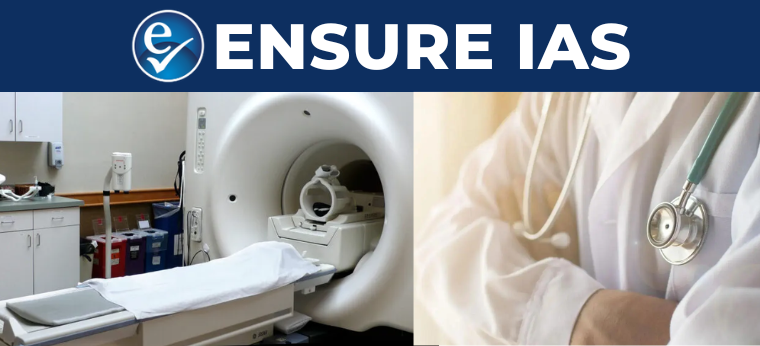- Courses
- GS Full Course 1 Year
- GS Full Course 2 Year
- GS Full Course 3 Year
- GS Full Course Till Selection
- CSAT
- 5 LAYERED ARJUNA Mentorship
- Public Administration Optional
- Online Program
- GS Recorded Course
- NCERT Batch
- Polity Module Course
- Geography Module Course
- Economy Module Course
- AMAC Module Course
- Modern India, Post Independence & World History Module Course
- Environment Module Course
- Governance Module Course
- Science & Tech. Module Course
- International Relations and Internal Security Module Course
- Disaster Management Module Course
- Ethics Module Course
- Essay Module Course
- Current Affairs Module Course
- ABOUT US
- OUR TOPPERS
- TEST SERIES
- FREE STUDY MATERIAL
- VIDEOS
- CONTACT US
India’s First Indigenous 1.5 Tesla MRI Machine
India’s First Indigenous 1.5 Tesla MRI Machine
31-03-2025

India has successfully developed its first indigenous 1.5 Tesla Magnetic Resonance Imaging (MRI) machine, marking a significant advancement in the country's medical technology sector.
Key Highlights
- Installation: The first unit will be installed at All India Institute of Medical Sciences (AIIMS), New Delhi.
- Development Partners:
- Ministry of Electronics and Information Technology (MeitY)
- Centre for Development of Advanced Computing (C-DAC)
- Implementing Agency: Society for Applied Microwave Electronics Engineering and Research (SAMEER), Mumbai led the execution.
Understanding MRI (Magnetic Resonance Imaging)
- Purpose: MRI is a non-invasive imaging technique used to obtain detailed images of internal body structures, particularly soft tissues, organs, bones, muscles, and blood vessels.
- Technology Used:
- Large magnets and radio waves create detailed images.
- Unlike X-rays or CT scans, MRI does not use ionizing radiation, making it a safer diagnostic tool.
Significance of Indigenous MRI Development
- Reduces Dependence on Imports: Strengthens India’s self-reliance in medical technology.
- Affordable Healthcare: Helps lower costs for MRI diagnostics in India.
- Boosts Medical Research and Innovation: Encourages domestic innovation in high-end medical imaging.
|
Also Read |
|
| FREE NIOS Books | |




